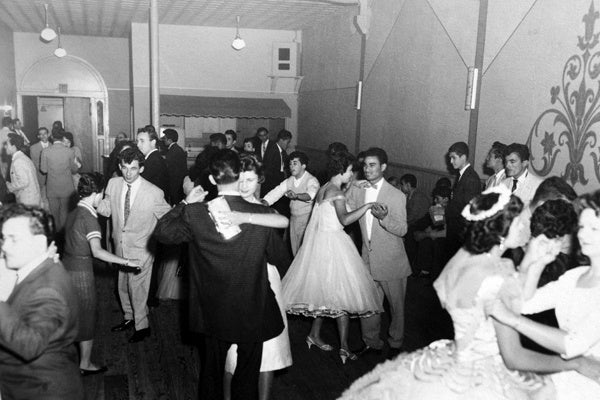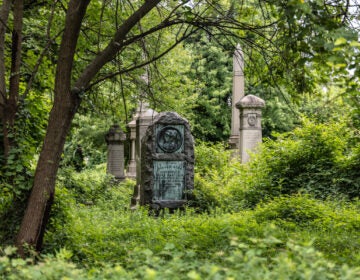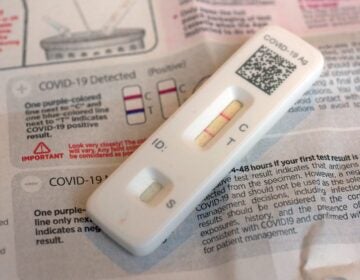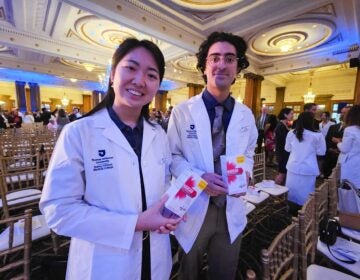Photos document 200 years of Latino history in Philadelphia
About half a million Latinos live in Philadelphia. They don’t all come from the same cultures and traditions, but they do share a lot — and it’s not just language.
A new book, “200 years of Latino History in Philadelphia,” uses photos to tell their stories — stories of family, work, and achievement.
Early in Philadelphia’s history, the rest of the Americas looked to the city as a model for building a nation free from colonial rule.
Venezuela’s Francisco de Miranda visited in 1783 and met with the founding fathers to get ideas about how to liberate Venezuela and other Latin American countries from the Spanish Empire.
Sabrina Vourvoulias, managing editor at Al Dia, the weekly Spanish-language newspaper that produced the book, said Miranda’s writings are available online. He said he was fascinated by Miranda’s descriptions of approaching Philadelphia and meeting people such as George Washington.
“I really thought that it’s something that most Latinos in Philadelphia know nothing about — and a lot of non-Latinos,” she said.
But the early history of Latinos in Philly is only one aspect of the picture the book paints.
“One of my favorite sections in the book shows a photographic record of what daily life was like for Latinos in the Philadelphia region from the 1940s and the 1980s,” Vourvoulias said.
The diverse images in the book come from the Historical Society of Pennsylvania, private collections, and the work of Al Dia’s photographer David Cruz.
Many of the photos reveal a migration of Latinos from their homelands in search of better jobs and prosperity.
For much of the city’s history, the shipping industry was attractive to Latino workers. But in the 1950s, large factories became a draw, as Puerto Rican workers were essentially “imported” to work at Philadelphia Baldwin Locomotives and Camen’s Campbell Soup, said Johnny Irizarry, director of La Casa Latina at the University of Pennsylvania.
Irizarry, who teaches Puerto Rican history, said working in Philadelphia also brought serious cultural “trauma” to the Puerto Rican community.
First, industrial manufacturing waned, he said.
The second thing that happened was a shift toward women becoming the bread winners in the family.
“Factories were looking for women workers for the needlepoint, sewing in the garment industry. And men were no longer needed for heavy lifting, because machinery was going to replace the heavy lifting,” he said.
When the garment industry eventually collapsed, it created a work vacuum that is still felt today, Irizarry said.
The story of Latino immigrants is not limited to blue-collar workers. Many professionals Latinos also have found their way to Philadelphia.
Dr. Carmen Febo San Miguel is one of them. A physician, she moved to Philadelphia in 1974 and began a residency at Hahnneman hospital. Later, she became a medical center director. However, as with many newcomers, she felt isolated.
One day, she heard music playing at a Latino church in Northeast Philadelphia.
“It was life-saving,” said Febo. “I was breathing my music and my sounds. The room was filled with people speaking Spanish, and it was this discovery of a sense of connection that I never had felt before.”
Febo immersed herself in cultural activities. In 1999 she became the director of the Taller Puertorriqueno, the Puerto Rican Workshop on 5th and Lehigh.
Febo firmly believes art can bring social change, and in the ’70s and ’80s she witnessed a political effervescence as activists formed community organizations and demanded better living conditions and equal treatment for the Spanish-speaking population.
“I see more recognition of that presence at governmental and citywide level [and] some political gains,” said Febo. “I also see that the process is very slow. If 12 percent of the city is Latino, as it came out in the last census, we don’t have 12 percent representation anywhere.”
According to the latest statistics compiled by the Pew Center on Hispanic Life, 52 percent of the 420,000 Latinos in Philadelphia are Puerto Rican, 17 percent are Mexican and 7 percent Dominican.
Some of their history of struggles and triumphs have been reported for the past 20 years by Al Dia. “200 years of Latino History in Philadelphia” is a photographic record of that journey.
WHYY is your source for fact-based, in-depth journalism and information. As a nonprofit organization, we rely on financial support from readers like you. Please give today.

























